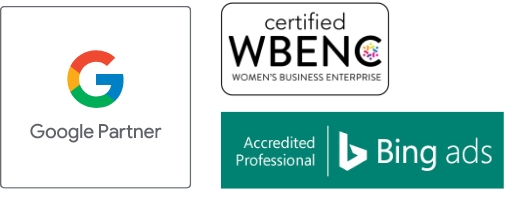
Humanizing Your Financial Institution: Bridging the Gap Between Numbers and People
A young couple dreams of purchasing their first home. Expectant parents seek financial stability to secure their child’s future. Individuals approaching retirement age want financial security for their health and well-being. In all these cases, consumers are looking for personalized and high-quality financial services to meet their needs.
Competition for every client has intensified, and financial institutions must leverage every resource to remain relevant and find creative ways to attract diverse demographics.
What may be getting lost is the human element.
Today’s clients are more interested in human connection and are less responsive to a generic institutional voice. Embracing a more human approach to financial marketing means sharing stories of how your team, financial solutions, technology, and processes have positively impacted clients’ lives, added value to your community, and steered finances in a more client-centered direction. These narratives help you build a rapport with clients and convey a sense of reliability, assuring your audience that they are in good hands with your institution.
HOW TO HUMANIZE YOUR FINANCIAL INSTITUTION
The most effective marketers in every industry don’t just advertise their brand – they build relationships. They employ strategies like drawing audiences in with compelling storytelling, personalizing content, and finding ways to encourage connection, especially when trying to connect with younger generations. As you develop your communications with potential clients, think about engaging them, building trust, and adding warmth at every step.
Here are some tips for getting started on incorporating a human touch into your marketing efforts:
- Spotlight Your Team: Move beyond corporate logos and stock images of office spaces. Give prospective clients and members opportunities to get acquainted with the individuals they will interact with at your financial institution. Featuring inspiring financial advisors, customer service representatives, and even satisfied clients as the “faces” of your institution on your website, social media posts, testimonial videos, email communications, blog posts, and advertisements conveys openness and approachability, enhancing relatability and increasing prospects’ comfort levels.
- Simplifying Product Names: All financial institutions may have similar products, but that doesn’t mean they have to be called the same thing. When naming your various financial offerings, such as checking accounts, consider what people would naturally search for, like “Free Checking” or “Senior Checking.” It’s more effective to align your product names with popular search terms rather than opting for vague titles like “Simple Checking” or “55 Plus Checking.” Alternatively, consider adjusting the meta titles of your product webpages so that popular search terms like “Free Checking” appear in the search results, even if the actual account name is different. Simplifying product names not only aids users in navigating your website but also makes it easier for them to compare products without spending time deciphering the differences between them. This strategic approach to product naming and meta titles can significantly enhance the discoverability and accessibility of your financial products.
- Personalize Digital Offerings and Customer Communications: To secure and retain customer loyalty, financial institutions should be committed to understanding and catering to individual consumer requirements and desires. This entails offering a wide range of digital transaction choices designed to enhance overall customer experience. By blending cutting-edge technology with real-time, intuitive customer interaction, this strategy empowers financial service providers to deliver exceptionally personalized services and communications. Leading companies in other industries are already implementing these practices.
- Show Your Authentic Self: While written content is essential for storytelling, captivating visuals and candid videos can better capture the attention of an audience accustomed to platforms like Instagram and TikTok. Even for older potential clients, compelling videos that showcase relatable client success stories, innovative financial technologies that improve everyday life, strong client-advisor relationships, and client-centric financial solutions offered by your institution will instill confidence that your organization is the right choice for their financial needs.
- Encourage Employee Engagement: Your financial advisors and staff have the most direct interactions with clients and members. Besides showcasing them in videos and social posts, encourage your team members to share stories of clients who have inspired them or aspects of their careers that have been particularly rewarding. Reading a social media post or blog article – or watching a video – in which a financial advisor or customer service representative expresses admiration and support for a client’s financial journey will help prospective clients feel confident that they will receive that level of support from your institution.
- Consider User-Generated Content: While professionally produced client success story videos hold immense power, sometimes potential clients seek lighter, more personal content. Consider allowing satisfied clients to create informal, lighthearted, and humorous vlogs, social media posts, and blog entries to share personal anecdotes from their financial experiences as they worked to achieve financial goals or secure their family’s future. While ensuring the content aligns with your institution’s image and values is important, don’t fret too much about perfect polish; authenticity is a valuable asset.
- Stay Social on Social Media: Your social media accounts aren’t just another place to advertise interest rates or share new products. Engaging in ongoing conversations with current and prospective clients, as well as potential partners in the community, demonstrates your institution’s genuine concern for people’s financial experiences and opinions. Encourage employees and long-term satisfied clients or supporters to share relevant content they’ve created, and designate staff members to promptly address questions from clients and community members. Insights gathered from these interactions can inform more personalized email communications, social media posts, and events.
A financial marketer’s work is never done when it comes to standing out among the many financial institutions in the market. However, adding a human element to each of your touchpoints is a reliable way to relate to your audiences and increase the chances they’ll choose your institution for their financial needs.
